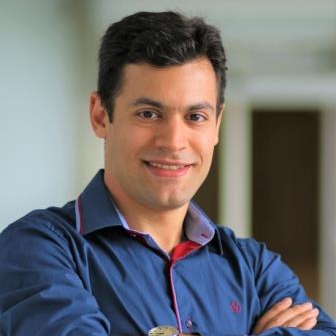State-of-the-Art Technologies in Microwave Sensors
A special issue of Sensors (ISSN 1424-8220). This special issue belongs to the section "Physical Sensors".
Deadline for manuscript submissions: closed (10 May 2023) | Viewed by 30296
Special Issue Editors
Interests: Active Microwave Sensors; Machine Learning; Biochemical Sensing; RF Circuits and Wireless power transmission
Interests: Material Characterization; Microwave Circuits; Artificial Intelligence
Special Issues, Collections and Topics in MDPI journals
Interests: microwave sensors; microwave circuits; metamaterials; RFID
Special Issues, Collections and Topics in MDPI journals
Special Issue Information
Dear Colleagues,
It’s been a while that microwave sensors have been employed in various applications, from agriculture and environmental monitoring to the biomedical industry. The basis of their operation is benefited from the nature of electromagnetic wave interaction with different media, namely, non-destructive sensing, thereby enabling sensing and measuring various targets.
Development in microwave sensing techniques includes novel deployment of planar passive resonant elements (e.g. SRR/CSRR), substrate integrated waveguide, antenna, active component, imprinted polymer, doppler radar sensor, whispering gallery mode, lab-on-chip platform, and more recently, intriguing application of artificial neural network in pursuit of smart sensors. Ever-growing investigations on these methodologies are tied with additional challenges in modern industry, whereas low cost and flexibility in design urge delving into more sophisticated and efficient architectures.
This special issue of State-of-Art Technologies in Microwave Sensors focuses on the latest updates in developing microwave sensors and sensing systems that aim to resolve the problems associated with emerging sensing techniques, possibly its integration with sensing network at a higher system level, and enabling demanding and impactful applications.
Dr. Mohammad Abdolrazzaghi
Prof. Dr. Vahid Nayyeri
Prof. Dr. Ferran Martín
Guest Editors
Manuscript Submission Information
Manuscripts should be submitted online at www.mdpi.com by registering and logging in to this website. Once you are registered, click here to go to the submission form. Manuscripts can be submitted until the deadline. All submissions that pass pre-check are peer-reviewed. Accepted papers will be published continuously in the journal (as soon as accepted) and will be listed together on the special issue website. Research articles, review articles as well as short communications are invited. For planned papers, a title and short abstract (about 100 words) can be sent to the Editorial Office for announcement on this website.
Submitted manuscripts should not have been published previously, nor be under consideration for publication elsewhere (except conference proceedings papers). All manuscripts are thoroughly refereed through a single-blind peer-review process. A guide for authors and other relevant information for submission of manuscripts is available on the Instructions for Authors page. Sensors is an international peer-reviewed open access semimonthly journal published by MDPI.
Please visit the Instructions for Authors page before submitting a manuscript. The Article Processing Charge (APC) for publication in this open access journal is 2600 CHF (Swiss Francs). Submitted papers should be well formatted and use good English. Authors may use MDPI's English editing service prior to publication or during author revisions.
Keywords
- Microwave Sensor
- Novel Techniques for Impriving Sensor Performance
- Material Characterization
- Sensor Networks
- Sub-surface Detection
- Crack Detection
- Biosensors
- Sensors for IoT
- Sensors for motion control applications
- Sensors for agriculture and food industry
- RFID-based sensors
- Machine Learning and Deep Learning
- Active and Passive Sensors
- Remote/Non-invasive Interrogation
Benefits of Publishing in a Special Issue
- Ease of navigation: Grouping papers by topic helps scholars navigate broad scope journals more efficiently.
- Greater discoverability: Special Issues support the reach and impact of scientific research. Articles in Special Issues are more discoverable and cited more frequently.
- Expansion of research network: Special Issues facilitate connections among authors, fostering scientific collaborations.
- External promotion: Articles in Special Issues are often promoted through the journal's social media, increasing their visibility.
- e-Book format: Special Issues with more than 10 articles can be published as dedicated e-books, ensuring wide and rapid dissemination.
Further information on MDPI's Special Issue polices can be found here.








